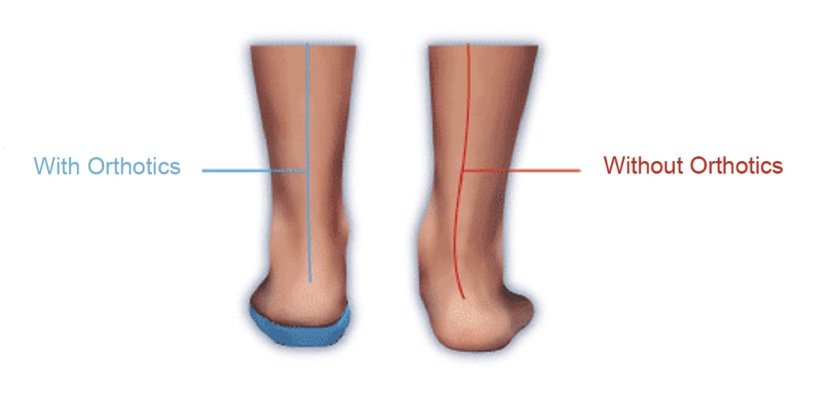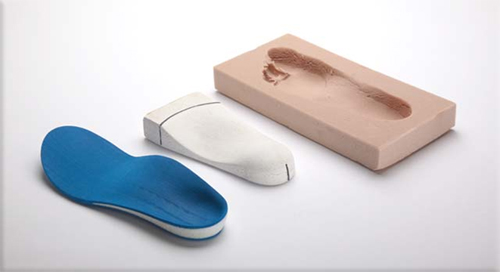Custom Fitting for Unique Feet Broomfield CO
Custom Fitting for Unique Feet Broomfield CO
Blog Article
The Role of a Boot Fitter Erie CO
Choosing the best ski boot can considerably affect your skiing expertise, impacting each comfort and performance. Understanding the essential parts involved in making this choice is vital for skiers of all levels, from beginners to seasoned consultants. The proper ski boot enhances management over your skis, permitting for better maneuverability on numerous terrains.
One of the primary concerns in choosing a ski boot is the fit. Ski boots should fit snugly, but not uncomfortably tight. It’s important to strive on numerous models and brands, as every has its personal unique shape and sizing. A good fit will minimize motion inside the boot, decreasing the possibility of blisters and guaranteeing that your power is transmitted efficiently to your skis.
Custom Footbeds for Improved Fit Wheat Ridge CO
Keep in mind that the majority ski boots come in several widths. The size of the boot is just one element of fit; the width will create a extra personalised expertise. Boots are sometimes categorized as narrow, medium, or wide, catering to completely different foot shapes. Your foot shape will largely dictate which width is finest suited to you, impacting how comfy you are feeling during your skiing sessions.
Next, the flex index must be taken into consideration whereas choosing the proper ski boot. Flex refers to how stiff or delicate a boot is, with stiffer boots offering extra control and response. On the other hand, softer boots are more forgiving and simpler for newbies to manage. Advanced skiers may choose stiffer models for optimum performance, while these new to the game might find softer choices extra affordable and comfortable.
The supposed ski type also performs a vital position in your selection - Evaluating Different Boot Fits Niwot CO. Are you planning on skiing totally on groomed trails, or do you aspire to enterprise into backcountry skiing? Freestyle skiers typically choose softer boots, permitting for flexibility during jumps and tips. Alpine skiers could go for stiffer models that promote stability and responsiveness on hard-packed snow or icy conditions
Boot Fitting Solutions for All Levels Loveland CO
Another necessary facet is the boot's thermal insulation and how it keeps your feet heat during prolonged publicity to chilly. Insulation supplies differ significantly, and a few boots come with added technology for warmth retention. If you’re skiing in frigid conditions, choosing a boot geared up for warmth can drastically enhance your enjoyment on the slopes.
When assessing the liners of the ski boot, it is wise to grasp that this element can drastically change the fit and feel of your boot. Many fashionable ski boots come with heat-moldable liners that conform to the shape of your foot over time. This customization can result in enhanced comfort and improved performance, as the liner supplies better assist on your foot and ankle.

Buckle techniques are another element to not overlook while choosing ski boots. The variety of buckles affects how securely the boot fits and the way easily you'll find a way to take it on and off. Boots with more buckles present a more adjustable fit and higher security. However, those with less complicated methods may be simpler for beginners to handle. Consider which elements matter most to you primarily based on personal desire and experience stage.
Boot Fit Calculators and Tools Loveland CO
Selecting the best ski boot size can additionally be sophisticated by differences in manufacturers. Sizes can differ, so it’s advisable to refer to measurement charts particular to each model you try on. Understanding your foot's measurements can guide you towards a extra fitting choice. This information may help you avoid choosing a boot that's either too giant or too small, each of which can detract out of your skiing expertise.
It’s important to examine for added features that some boots provide, such as stroll modes or interchangeable soles. Walk modes permit for simpler movement when you’re not in your skis, a fantastic boon for people who like to hike or move across the lodge. Interchangeable soles could make the boot extra versatile, allowing it to adapt to various varieties of skiing and even walking.
Try to seek the steering of experienced retail professionals when navigating the plethora of choices obtainable. They can provide insights and proposals primarily based on your skiing fashion, talent stage, and personal preferences. Their expertise will help filter the appropriate boots that match your wants, guiding you through the nuances of fit and performance.
The Art of Ski Boot Customization Golden CO
In conclusion, the quest for the right ski boot combines varied important elements that require careful consideration. Fit, flex, type, insulation, liners, buckles, dimension variations, and extra features all play a role in your choice. Spending time to research and verify out different models can make a considerable difference in each performance and luxury, guaranteeing a more pleasant day on the slopes. Prioritizing these components and in search of professional advice will equip you with the necessary tools to make an informed selection, leading to improved skiing experiences for years to return.
- Assess your talent degree; beginner skiers sometimes need softer flex boots, while advanced skiers benefit from stiffer options for better control.
- Prioritize fit over model; a well-fitting boot is essential for comfort and performance, whatever the producer.
- Consider the boot’s final width, because it influences the amount of your foot; a narrow final enhances precision for narrow toes, whereas a wide last offers comfort for broader ft.
- Pay attention to flex index ratings; each boot has a unique flex rating that matches your skiing fashion and bodily attributes, affecting responsiveness and comfort.
- Explore custom insoles; they will significantly improve comfort and prevent issues such as blisters and chilly toes by offering better arch support and weight distribution.
- Test boots in-store with appropriate ski socks; make sure the fit is snug however not painfully tight, permitting for slight wiggle room and correct circulation.
- Look for heat-moldable liners; these could be custom-made to the shape of your foot for enhanced comfort, particularly when you expertise any pressure points.
- Consider the type of skiing you propose to do, whether it's alpine, backcountry, or freestyle, as every requires particular boot characteristics for optimal performance.
- Check for buckling techniques and options like power straps; an excellent closure can enhance fit, scale back movement, and improve general skiing effectivity.
- Don’t overlook about liner materials; totally different supplies provide varying ranges of warmth, moisture-wicking, and cushioning, directly impacting your snowboarding experience.undefinedWhat size ski boot ought to I choose?
Choosing the best measurement ski boot is crucial for comfort and performance. Measure your foot size in centimeters and consult a ski boot measurement chart, typically a half-size smaller than your common shoe measurement. Always try boots on with the right ski socks for an accurate fit.
How do I know if the ski boot is too tight or too loose?
Custom Boot Fittings Explained Golden CO
A well-fitted ski boot ought to feel cosy however not painfully tight. Your toes should just contact the front of the boot when standing upright. When you bend your knees ahead, your toes should pull barely away from the entrance. A unfastened boot can result in poor management and blisters.
What is the distinction between gentle and stiff ski boots?
Common Boot Fit Issues and Fixes Superior CO
Soft ski boots provide extra flexibility and comfort, making them appropriate for beginners or informal skiers - Creative Solutions for Boot Fitting Problems Northglenn CO. Stiff boots present better responsiveness and management for knowledgeable skiers on difficult terrain. It's essential to decide on primarily based on your ability degree and snowboarding style
Should I consider boot width when choosing ski boots?
Yes, boot width, also identified as "last," is necessary for comfort. Ski boots come in different widths—narrow, medium, and wide. Measure the width of your foot and consider each mannequin's fit to ensure comfort and scale back pressure points while snowboarding.
What kind of ski boot is best for my snowboarding style?
Choosing the Right Ski Boot Fit Firestone CO
Consider your skiing type: if you plan to journey groomed trails, an all-mountain boot is good. Backcountry skiers should go for lighter, more versatile options. Freestyle skiers profit from soft boots for higher maneuverability. Match the boot type to your skiing choice for optimum performance.

How important is custom fitting for ski boots?
Footbeds for Proper Ski Boot Fit Loveland CO
Custom fitting can considerably enhance comfort and performance. Professional boot fitters can adjust your boots to your foot shape, addressing particular pressure points and guaranteeing a better fit. While not important, it’s beneficial, particularly for people who ski frequently or have foot issues.

Is it price spending more on higher-end ski boots?
Higher-end ski boots typically characteristic advanced supplies and know-how, providing higher comfort, performance, and sturdiness. If you ski frequently, investing in a high quality pair can improve your experience and allow you to develop better abilities. Consider your skiing frequency and elegance when deciding.
Boot Fitting 101 Essentials Arvada CO
What features ought to I look for in a ski boot?
Look for features similar to heat-moldable liners for custom-made comfort, adjustable buckles for a better fit, and waterproof supplies to keep your toes dry. Flex rating, insulation, and weight are also crucial components that should align along with your skiing needs and situations.
How-To Guide for Ski Boot Fitting Wheat Ridge CO
How do I keep and retailer my ski boots?
Always dry your ski boots after each use to stop moisture buildup, which might lead to odors or deterioration. Store them in a cool, dry place away from direct daylight. Regularly verify the liners, buckles, and soles for wear and tear to make sure they proceed to be in good situation.
go now Common Boot Fit Issues and Fixes Report this page